
Pipe utilities are the unseen infrastructure that support our daily lives. Out of sight and out of mind for many, pipes transport fresh- and wastewater, protect sensitive electrical and information transmission lines, provide drainage, and delivery energy in the form of oil and gas. The scope and scale of pipelines is similar to that of roadways and powerlines—extensive and ubiquitous.
The impact of pipe infrastructure on human health and development cannot be overstated. By facilitating proper sanitation and access to clean water, pipes contribute to longer lifespans and healthier lives for people across the globe. As such, pipelines of all types should be considered essential infrastructure and managed accordingly.
That means prioritizing long-term performance and value delivery over short-term cost savings; choosing the safest and most effective methods for installation and repair; remediating damaged pipes in a way that’s environmentally and socially responsible.
This article will outline the economic and social imperative of responsible asset usage and management in the context of trenchless technology. If you’d prefer to watch or listen along, check out the embedded webinar by PW Trenchless founder and CEO David O’Sullivan below. Let’s get into it!
Before we dive into the economics of pipes and infrastructure, we should define common methods for pipe replacement. The most common and well-known technique is open-cut replacement. This involves excavating a trench to access the length of pipe to be replaced. It has the chief benefit of simplicity, requiring less specialized equipment and training than other methods. However, its downsides are significant. Open-cut replacement often requires cutting through concrete and asphalt, causing damage that reduces the expected lifespan of the impacted road or sidewalk. It’s noisy, dirty, and disruptive to residents and commuters. Due to the volume of earth moved, the amount of heavy equipment used, and the impact on traffic during construction, open-cut replacement is a carbon-intensive process.
Trenchless technology encompasses every other form of pipe replacement. It’s in the name: replacement without digging a trench. In truth, trenchless solutions often require digging access points. However, the amount of earth excavated is a tiny fraction of what would be moved by an open-cut project. Trenchless solutions are far less polluting—up to 90% more carbon efficient than open-cut. They may be faster and are usually less noisy and disruptive to traffic. While there are situations where trenchless technology is not an appropriate solution, in most cases where open cut works, so will trenchless.
Canadian governments are subject to accounting and reporting standards set by the Public Sector Accounting Board (PSAB). These standards apply to all levels of government, from the Federal Government to local government organizations such as Crown corporations. When setting accounting standards, the Board has a number of specific goals in mind, including:
PSAB Standard 3150 is a set of rules that covers the management of tangible capital assets by governments. Tangible meaning physically real—not intellectual property or digital assets. Capital assets meaning anything to which a dollar value may be assigned—roads, parks, buildings, and even vehicles and equipment fall under this standard, as do pipe systems.
Governments track the value of assets over time to stay on top of appreciation and depreciation. Assets worth more than $10,000 must be tracked individually, while smaller assets may be grouped into collections. Real estate is always counted individually, regardless of asset value.
This standard ensures accurate and transparent planning and budgeting for asset management. It’s a consistent accounting reporting framework for comparative analysis. In short, it’s a reporting standard that attempts to ensure fiscally responsible asset management at all levels of government.
In the context of pipeline systems, it raises questions about what the most responsible course of action is for a distressed asset. If conventional replacement methods come with higher costs, more pollution, and greater disruption to communities, is it fiscally irresponsible not to consider alternative options?
You may be familiar with the “triple bottom line” method of calculating value. Rather than focusing on a conventional profit/loss bottom line, the triple bottom line framework accounts for social and environmental factors as well as financial factors. It’s a system that tries to account for “people, planet, and profit” at once, and has become a standard for many public organizations.
There are different ways to calculate a triple bottom line. One simple way is through a points system. Take for example a watermain rehabilitation project along a residential street. A watermain is failing. Without remediation, it will waste significant amounts of water and possibly cause damage to other assets: roads, private property, and the surrounding environment. The watermain runs beneath a treed area valued by locals that may also contribute to local biodiversity and soil quality.
In a standard bidding process for this type of job, factoring in only cost, conventional replacement may be highly competitive against trenchless technology. In a triple bottom line framework, the true value of a less disruptive method becomes apparent. Removal of mature trees reduces the natural beauty of the region for decades if not permanently, so there’s a social component to account for. Digging trenches is highly disruptive to the local community during construction, so there’s another social factor. The act of replacing a watermain is itself highly disruptive, adding to social costs. Conventional techniques are far more carbon intensive—up to 90% more polluting than trenchless, so there’s an environmental factor to consider beyond impact to trees and wildlife.
By assigning scores on all three dimensions, a more holistic view of profit and loss emerges. The cumulative social and environmental cost of tree removal might mitigate any up-front savings from conventional replacement. This mitigation becomes even more pronounced when accounting for carbon emissions, noise pollution, traffic disruption, and other factors.
Let’s revisit the watermain example, exploring a possible scoring system that accounts for environmental and social costs.
Here’s a possible scoring rubric when evaluating a watermain project as described above:
Each point adds to the social cost of the project; when combined with estimated financial impacts, we might end up with the following example evaluation:
We can see that doing nothing becomes the costliest option when considering both social impact and financial cost. Replacing the entire main in the roadway is fiscally expensive, but it solves the problem long-term, resulting in less social cost overall. However, renovating the pipe rather than replacing offers both moderate fiscal costs and low social costs. This is the kind of accounting that reveals holistic value in pipe replacement.
In the context of PSAB 3150 and triple bottom line accounting, trenchless technology is the most economically viable option for pipe remediation.
There are some important questions to ask about pipe replacement in general. In many cases, open-cut replacement is the first and default answer to pipe remediation. Can we really afford to replace pipes all the time?
The cost per meter of pipe might be insignificant, but the cost to cut and excavate a trench, install the pipe, and remediate the site is high. It disrupts the longevity of roads, reducing their expected lifespan before replacement by up to 18%. It’s carbon-intensive, often dusty and dirty, disruptive to residents and commuters alike, and is considerably more likely to result in a workplace injury than a trenchless solution.
With all this in mind, and in the context of PSAB 3150, is replacement-by-default at odds with directives to maximize asset value? By negatively impacting the environment and the people affected by each open-cut project, the math suggests that the answer is yes.
An alternate tendering process where the contract is awarded to one entity which comprises both engineering and contracting.
Because PW Trenchless Construction offers such innovative solutions for underground utilities, it is often beneficial for the owner to request solutions based on a performance specification. This allows PW Trenchess to offer unique solutions while working with equally innovative engineering companies. Learn more about design - build here!
More InfoNew installation methodologies include HDD & traditional open cut Learn more about new installation here!
More InfoIn this day & age of pipe systems reaching the end of their projected lifespan, pipe replacement and pipe rehabilitation have become major fields of engineering.
PW Trenchless Construction provides viable options such as pipe bursting, loose fit lining and internal pipe re-construction whether partial & fully circumferential. Learn more about pipe replacement & rehabilitation here!
More InfoThe aging culverts under roads and highways in many case have reached the end of their engineered life-span. We consider the rehabilitation or replacement of these culverts to be vital to our built environment.
PW Trenchless has been a pioneer in working with MOTH, railway companies and municipalities in developing rehabilitation methodologies for the hundreds of thousands of culverts that currently exist in BC. We have offered solutions in both procurement and construction from design-build to sliplining, invert rehabilitation and full circumferential relining. Learn more about culvert rehabilitation here!
More InfoOften pipe failure can be concentrated to one section, for various reason, leaving the rest of the pipe in good condition. The repair of these localized failures are know as external point repairs (EPR's).
EPR's demonstrate PW's ability to work as both a trenchless and civil contractor, completing EPR contracts using our civil contracting skills and assisting other pure trenchless contractors who only have the capacity to work in an existing pipe. Learn more about point repairs here!
More InfoPipe upsizing is the fundamental concept of pipe bursting.
The vast majority of pipes are less than or equal to 200mm in diameter, but with today's densification practices of urban design, there is a major demand to increase current capacity to handle extra flow. Pipe bursting provides the ideal solution to this issue, particularly in an urban setting. Learn more about pipe upsizing here!
More InfoHorizontal Directional Drilling is a low impact Trenchless construction service where pipe is installed in a shallow arc along a bore path which has been created by a drilling rig. Often the terms Horizontal Directional Drilling (HDD) and Directional Boring are used interchangeably, but in our industry we use the word “boring” when we utilize smaller sized drilling rigs with small diameters for short crossings in the hundreds of feet, and we use the word “drilling” when we utilize larger rigs with large diameters for long crossings in the thousands of feet. Learn more about horizontal directional drilling here!
More InfoPrimus Line® is a flexible sliplining solution for the trenchless rehabilitation of pressure pipes. The system consists of a flexible Kevlar® reinforced liner and specially developed end fittings. Primus Line® is not bonded to the host pipe and is self-supporting. An annulus remains between Primus Line® and the host pipe.
Developed by experienced engineers, the system is suitable for different media as well as various application needs and has already proven itself in numerous projects.Learn more about primus lining here!
More Info



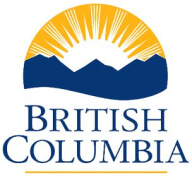



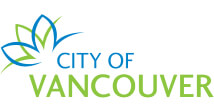




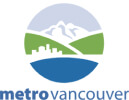




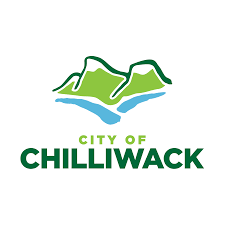
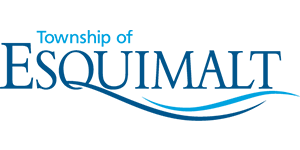

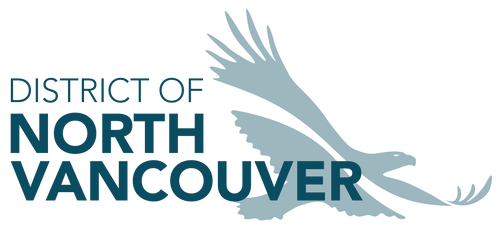
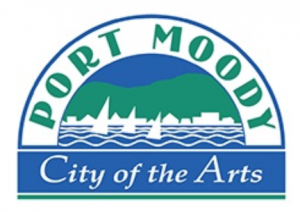

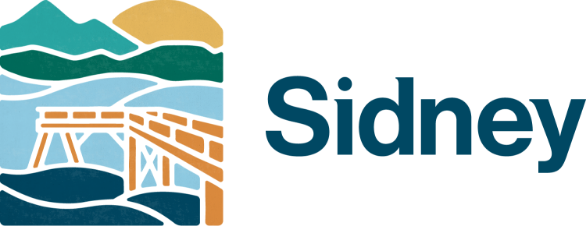

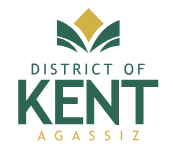



When you join PWT, you become part of a community of people who are engaged in the most innovative practices in the Trenchless Industry. We have been instrumental in setting up a scientific method for cities to gain carbon offsets/credits from their use of trenchless construction. This system has been reviewed by the BC Government and has been approved as of December 2018. We expect to see it in common use shortly.
Subscribe to our newsletter for cutting-edge industry updates, expert knowledge, and exclusive content.